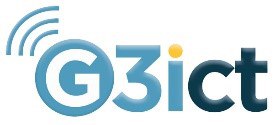San Francisco 49ers New Levi's Stadium is an Inclusive Dream Come True for Fans with Disabilities
Posted on May 30, 2013
David Fazio writes about the Smart Technology-enabled new Levi's Stadium, home to the American football team San Fracisco 49ers, and the accessible options that fans with disabilities can look forward to from the comfort of their seats.
Sporting events can be difficult to follow. Rules of the game, penalties, play formations, player statistics, scoring percentages, and myriad other number references that can be quite overwhelming. All of that to keep up with and you still need to follow the ball! That is just if you are at home watching the game on television. Enter a sports stadium and you add restroom use, food and beverage concessions, souvenirs, and the spectacle becomes ever more complicated. Tack on a cognitive, visual, hearing, or other forms of disabilities and impairments and you end up focusing more on navigating and accessibility, forget keeping an eye on the ball.
The San Francisco 49ers’ (the professional American football team, for those not clued into sports) new home at Levi’s Stadium in Santa Clara, California is a goldmine that affords fans with disabilities the ability to not only access the game, but to be more engaged and included in the experience of live sports spectatorship than previously thought possible.
Bob Lange, Public Relations Director for the team, explained that the goal of the stadium was to be “the smartest.” From the onset of design, the plan was to “bring together the best of the Bay Area and Silicon Valley.” Little did they know they were designing for inclusion through harmony at work.

The design is software-centric, relying on the massive BYOD (bring your own device) trend. This allows it to keep pace with new technologies that provide the stadium and users with the flexibility to continuously innovate what services are made available.
Fans will utilize personal devices to customize and enhance their game-day experience. These enhancements have a butterfly effect that accommodates fans with disabilities. The differentiator between reasonable accommodation and “cool” gadget ceases to exist. All that remains is a group of fans sharing a memorable experience in the same way, through the same technology. They will bond over a game, while keeping track of the stats on field.
Fans can access information via apps, allowing them to keep up-to-date on the game rules, penalties and so forth. You can view the proceedings from multiple camera angles as well as replays during the game, which can be very useful for persons with visual impairments. Radio feeds will assist those who heavily rely on audio to translate the visual world while tablet and smartphone screens can provide text captioning for the deaf. Every fan can view alternate paths to concessions and restrooms, traffic patterns outside the stadium and choose the safest and most suitable route. This is particularly beneficial to persons with mobility impairments.
Moving around to order food, souvenirs and the like will not be necessary here because your customizable experience allows you to do that from your seat, through your mobile device. As we have seen with mPesa in Kenya, cash transactions will soon be a thing of the past, as Smartphones and tablets can be used to make payments. Levi’s Stadium makes electronic transactions seamless for fans through the BYOD concept. The possibilities are limitless and mobile app developers have a goldmine of an opportunity to let their imagination design accessible and inclusive sports spectatorship experience.
This experience-oriented approach is not part of some distant, sci-fi future, but is a game plan of the present. Advancements of technology and the ease that they bring to users, in this case, are a novelty for everyone, but they are also critical in bringing the same kind of sporting experience to football fans, irrespective of our functional abilities. They allow us to bond and share meaningful experiences. I will no longer wonder what is going on in the field, or depend on my friend or family to tell me the scores. In the 49ers new home, I feel invited and welcomed. Because of inclusive design, I am able to fully engage and be an active participant - just like it should be in every sphere of my life.






























